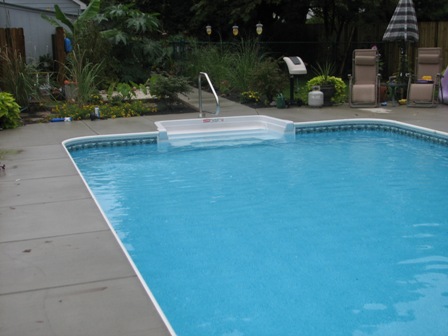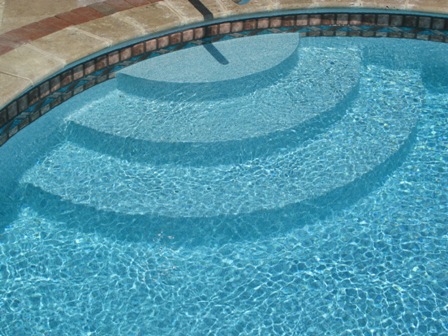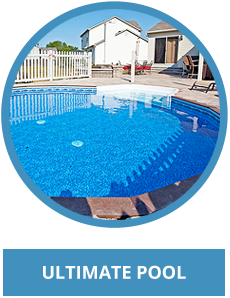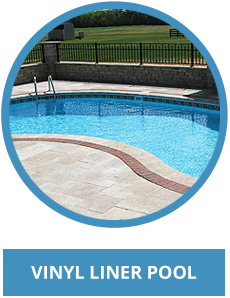One of the trends that is happening in the vinyl liner pool market is the option of covering steps and benches with the liner. I personally think that it is a great way to go. It gives the pool a uniform look rather than having a white fiberglass step sticking out against a blue liner.
Fiberglass steps and seating areas.
Going this route is the least expensive and the easy way to build a vinyl pool. The step or bench comes as a one piece unit that is bolted into place with the wall panels. The liner is sealed around these with a gasket and faceplate strip. This makes it easy to build the pool, knowing that your liner will fit without wrinkles. The bulk of vinyl pools are built this way and turn out very nice.
Vinyl covered steps and benches.
Going this route when building a vinyl pool is becoming very popular as I stated before. Adding the steps and benches with the liner covering them gives the pool complete uniformity. The color scheme of the liner is the same across the whole pool without the steps sticking out.
One of the drawbacks to covering the step was the use of rod pockets and clips to hold the liner into the step. It could be a pain to work with this system of securing the liner to the step or bench area. Manufactures now make a bead receiver that is built into the step or bench when it is assembled. The liner manufacture welds a bead on the backside of the liner where it will attach to the step. This is the same bead that is used to secure the liner into the coping around the top of the pool. This works much better in securing the liner to the step or bench than the rod pocket and clip system.
Building a pool with a vinyl covered step does require the builder to really pay attention to dimensions and measurements when constructing the pool. If the pool is not built right to specs there is a chance the liner will have wrinkles around the step area. You would think that should not be an issue but a lot of pools are built with the philosophy, “ah that’s close enough”. Sad to say but it’s true.
Overall if you are looking to put some “wow” factor into your vinyl liner pool, look at the vinyl covered step and bench options.









